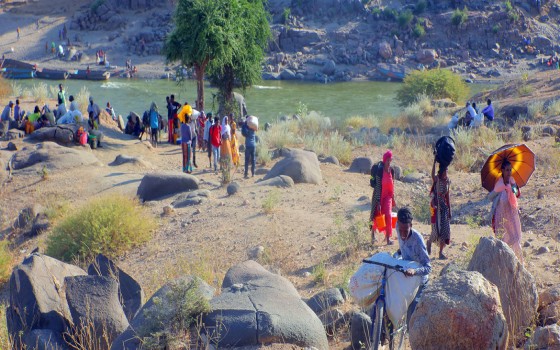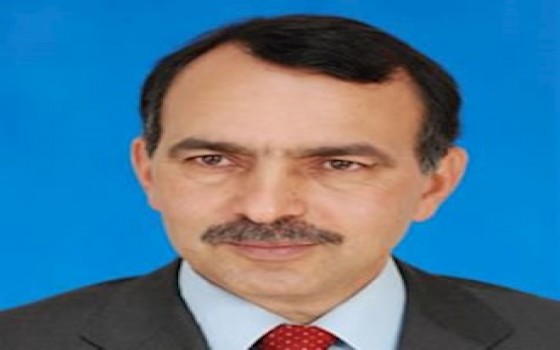
sustainable food systems ..... Prepared by: Dr. Abdel Moneim Sedky.... Professor at the Animal Production Research Institute

- Europe and Arabs
- Saturday , 11 March 2023 14:1 PM GMT
sustainable food systems
Prepared by: Dr. Abdel Moneim Sedky
Professor at the Animal Production Research Institute
During the next twenty years, the population is expected to reach 9 billion people, and the challenge facing the world may conflict with the pursuit of expanding production and providing it to humanity with the quality of production that may not meet the standards of sustainability, and this challenge constitutes a concern for experts and academics specialized in the fields of food, healthy food, and combating change. climatic. In order for the world not to reach a critical situation in which the choice is between quantitative production and qualitative criteria (food or sustainability), the proposed solutions try to urgently harmonize between food and sustainability so that humanity will never have to choose between one of them, but rather establish a comprehensive equation: providing food with Promote sustainability. The problem facing the world today revolves around how to sustainably feed the world over the coming decades, and this represents a major challenge.
The approximately 828 million chronically hungry people around the world indicate that food systems - the networks needed to produce and transport food, and ensure that it reaches consumers - do not meet the needs of large segments of society. Therefore, improving the performance of food systems and their ability to meet the needs of the poorest will be a fundamental factor in ending hunger. The expected increase in global demand for food, which requires stronger food systems by 2030, reaches 35%, and about 40% of the gains resulting from cost reductions and improved efficiency come from reducing transportation costs, quality storage and proper handling.
Sustainable food systems is a system that provides healthy food to meet current nutritional needs, while maintaining healthy ecosystems that can also provide food for generations to come with minimal negative impact on the environment, encourages local production and distribution infrastructures, and makes nutritious food available, easy and affordable for all. Moreover, it is humane and just, protecting farmers and other workers, consumers, and communities.
Wrong or broken diets can affect food security in several ways. They drive up prices, making it more difficult for the poorest to afford nutritious foods, or they may prevent smallholder farmers from making good profits from their crops. Imbalances in food systems can be linked to shocks associated with climate change and globalization, as well as conflicts and conflicts. Even in stable environments, poor communication, transportation and storage facilities, disrupted commercial markets, and inequality can limit people's ability to access the food they need.
Diets are not abstract concepts and are faced with the following problems:
• Isolation: The vast majority of the hungry poor live in isolation - geographically, economically, socially and politically - and it is difficult to reach them. Even when nutritious food is available, it is often very expensive.
• Lean Season: When crops fail during the lean months between harvests, poor households in urban and rural areas lack the resources to meet their nutritional needs and are forced to adopt harmful coping strategies, including eating food that is less in quantity and nutritional value.
• Poor storage capacity: Poor storage capacity during a good harvest season causes a surplus of food in the market, prices and quality of which decline, and farmers are unable to sell their products at profitable prices when supply increases, which leads to wastage and spoilage of crops, and market volatility increases.
These problems disproportionately affect women, in part because they have less access to assets and services, and because they are more likely to be excluded from decision-making processes.
Examples of positively affecting diets:
• School meals: produced locally and linking local smallholder farmers to the supply chain for school meal projects
• Food promotion initiatives: with vitamins and minerals that help local communities have access to nutritious, locally produced foods
• Establishment and rehabilitation of infrastructure: to enhance public food reserves
• Supporting smallholder farmers through credit facilities, capacity development, and enhanced market access.
How to sustainably grow food crops to meet future demand. That the future needs to embrace how to grow our food sustainably for ten billion people that we will deal with over the next twenty years, and this is a great challenge facing all of us, which is how we will feed this large number of people. The environmental crises that we live in have accelerated our need to consider food production, And how we grow food sustainably, in a way that protects the environment, and produce a lot of food in a sustainable way












No Comments Found